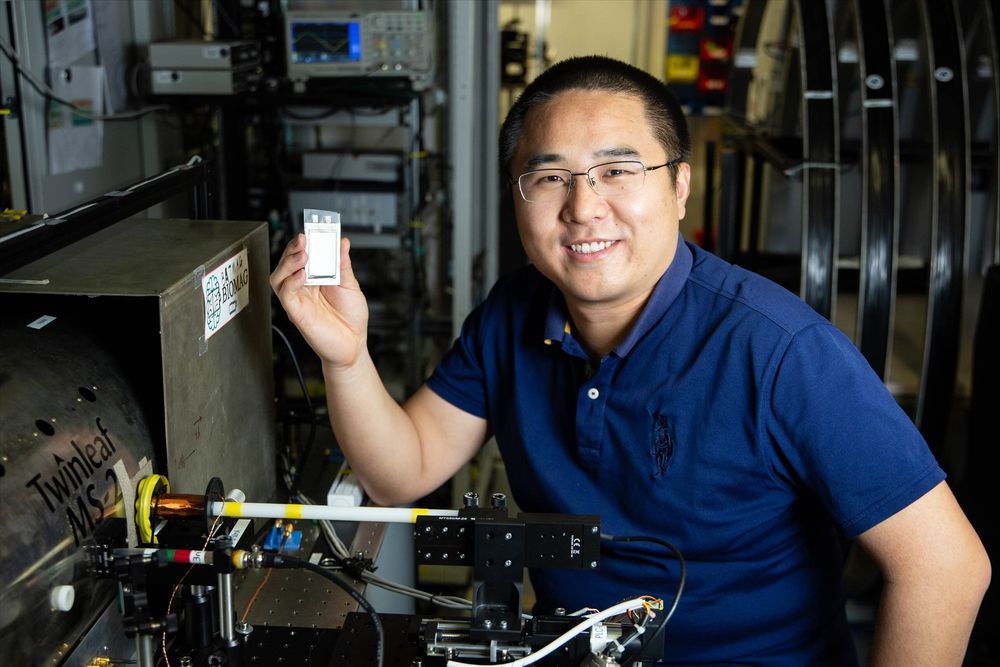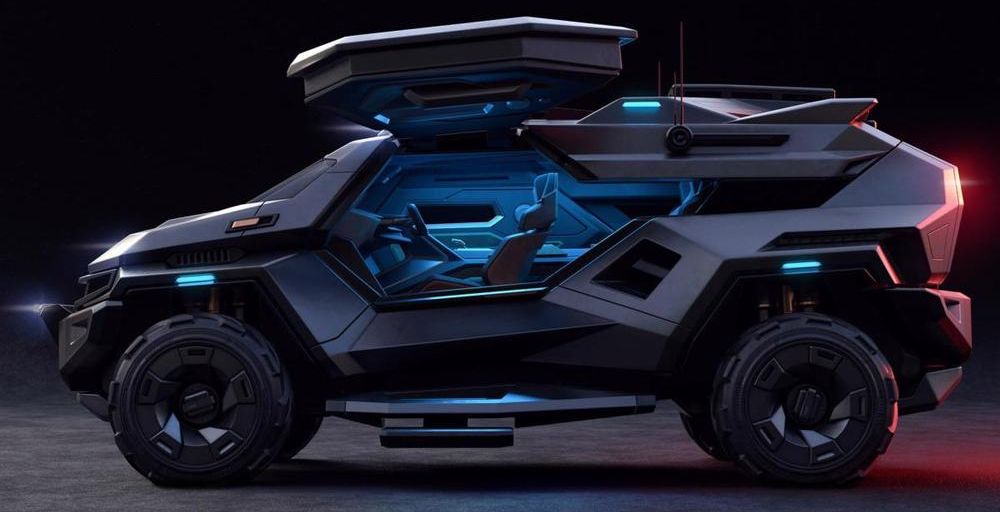Straight from the year 2029.
Category: transportation – Page 401

Watch Upload Season 1
In 2033, people can be “uploaded” into virtual reality hotels run by 6 tech firms. Cash-strapped Nora lives in Brooklyn and works customer service for the luxurious “Lakeview” digital afterlife. When L.A. party-boy/coder Nathan’s self-driving car crashes, his high-maintenance girlfriend uploads him permanently into Nora’s VR world. Upload is created by Greg Daniels (The Office).
Tesla patents a new battery cell that Elon Musk hypes as ‘way more important than it sounds’
Tesla has patented a new battery cell with a tabless electrode that Elon Musk hypes as “way more important than it sounds.”
In the new patent application published today, Tesla explains constraints with current battery cells:
Current cells use a jelly-roll design in which the cathode, anode, and separators are rolled together and have a cathode tab and an anode tab to connect to the positive and negative terminals of the cell can. The path of the current necessarily travels through these tabs to connectors on the outside of the battery cell. However, ohmic resistance is increased with distance when current must travel all the way along the cathode or anode to the tab and out of the cell. Furthermore, because the tabs are additional components, they increase costs and present manufacturing challenges.

Engineers Unveil a System That Delivers Electricity Wirelessly
Wireless charging is already a thing (in smartphones, for example), but scientists are working on the next level of this technology that could deliver power over greater distances and to moving objects, such as cars.
Imagine cruising down the road while your electric vehicle gets charged, or having a robot that doesn’t lose battery life while it moves around a factory floor. That’s the sort of potential behind the newly developed technology from a team at Stanford University.
If you’re a long-time ScienceAlert reader, you may remember the same researchers first debuted the technology back in 2017. Now it’s been made more efficient, more powerful, and more practical – so it can hopefully soon be moved out of the lab.
Electric Helicopters Are Coming
Circa 2019
The electrification of mobility has hit every industry to some degree or another, with some barely catching on but now doing so. The helicopter industry has been slow to adopt electricity, but the Californian consulting company Tier 1 Engineering is up to the challenge. Tier 1 Engineering Converts a Helicopter to Electricity, Snatches Guinness World Record
Tier.

Simple method for measuring the state of lithium-ion batteries
Rechargeable batteries are at the heart of many new technologies involving, for example, the increased use of renewable energies. More specifically, they are employed to power electric vehicles, cell phones, and laptops. Scientists at Johannes Gutenberg University Mainz (JGU) and the Helmholtz Institute Mainz (HIM) in Germany have now presented a non-contact method for detecting the state of charge and any defects in lithium-ion batteries. For this purpose, atomic magnetometers are used to measure the magnetic field around battery cells. Professor Dmitry Budker and his team usually use atomic magnetometry to explore fundamental questions of physics, such as the search for new particles. Magnetometry is the term used to describe the measurement of magnetic fields. One simple example of its application is the compass, which the Earth’s magnetic field causes to point north.
Non-contact quality assurance of batteries using atomic magnetometers
The demand for high-capacity rechargeable batteries is growing and so is the need for a form of sensitive, accurate diagnostic technology for determining the state of a battery cell. The success of many new developments will depend on whether batteries can be produced that can deliver sufficient capacity and a long effective life span. “Undertaking the quality assurance of rechargeable batteries is a significant challenge. Non-contact methods can potentially provide fresh stimulus for improvement in batteries,” said Dr. Arne Wickenbrock, a member of Professor Dmitry Budker’s work group at the JGU Institute of Physics and the Helmholtz Institute Mainz. The group has achieved a breakthrough by using atomic magnetometers to take measurements. The idea came about during a teleconference between Budker and his colleague Professor Alexej Jerschow of New York University. They developed a concept and, with close cooperation between the two groups, carried out the related experiments in Mainz.

Delfast’s new 50 mph (80 km/h) electric bicycle stretches the word ‘bicycle’
In what will surely divide the e-cycling world, Delfast has updated its latest high-speed electric bicycle. The Top 2.0 is a high power, 50 mph (80 km/h) e-bike that pushes the limits of electric bicycles.
Waterbike Hydrofoil Bicycle
Circa 2011 face_with_colon_three
Racing a hydrofoil bicycle through a slalom course!
more Informaton and pictures of this bike at http://www.human-powered-hydrofoils.com/hydrofoils/waterbike/
watch the Trampofoil do the same course even faster: http://youtu.be/jDQDQ_zIxl0
or watch an even faster Waterbike: http://youtu.be/RaYhyeGxYoA
Please subscribe for more videos like that!
http://freaksport.com/waterbike-hydrofoil-bicycle/
Music: Bicycle Kevin MacLeod (incompetech.com)

The Armortruck SUV Is An Apocalypse-Ready Supertruck
Specialty subdivisions of BMW and Range Rover offer bulletproof variants of the luxury automakers’ current models, and other aftermarket companies like Brabus and AddArmor go a step further by making donor vehicles damn-near bombproof. But none of those examples look anywhere near as sturdy as the Armortruck SUV.